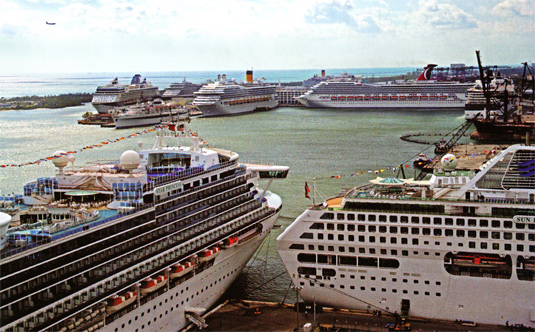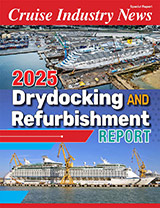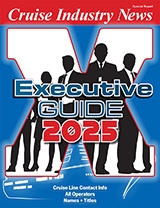 As the cruise traffic grows, Florida ports continue to benefit from the lion’s share of the business, while also gearing up for more. And to handle the growth, terminal construction and upgrades, dedicated transportation systems and roadways, are either underway or being planned.
As the cruise traffic grows, Florida ports continue to benefit from the lion’s share of the business, while also gearing up for more. And to handle the growth, terminal construction and upgrades, dedicated transportation systems and roadways, are either underway or being planned.
While the cruise industry has grown 107 percent over the past 10 years, the cruise traffic in Port Everglades has grown some 228 percent, with some 3.6 million passengers expected in 2007, including 2.76 million multi-day and 850,000 one-day cruisers. For its last fiscal year, ending Sept. 30, the port counted 3.25 million passengers.
At the time of writing, Port Director Phillip C. Allen said he was expecting to set a new record with 46,000 passengers in a single day on Dec. 23 (2006).
To handle that level of traffic, the seaport is working closely with the airport and coordinating taxis and busses, trying to make the passenger experience as seamless as possible, added Carlos Buqueras, director of business development, cruise.
Port Everglades has steadily been expanding and upgrading its facilities and has 11 full-time terminals plus one additional facility if even more ships should be calling.
Being developed is a master plan, looking at the next 10 to 15 years, according to Allen. The plan, which is expected to be ready in spring, will not only look at how Port Everglades can grow its cruise traffic, but also how it can best balance its cruise, cargo and fuel businesses.
“The objective is to woo passengers so that when they plan their next cruise, they will want to sail from Port Everglades again,” said Allen.
In Miami, proposals for the new $1.2 billion one-mile tunnel project that will facilitate traffic into and out of the port are due mid-February, with a contract expected to be awarded in spring, according to Port Director Bill Johnson. The tunnel is expected to be in operation by 2013.
To be awarded as a 35-year concession with the concessionaire financing, building, maintaining and operating the tunnel, Johnson said that the concessionaire would be paid back at intervals over the term of the contract.
On Florida’s west coast, Tampa has cornered the cruise business with two Carnival Cruise Lines’ ships sailing year-round, and with Royal Caribbean, Celebrity and Holland America ships sailing seasonally.
For this fiscal year, starting Oct. 1, 2006, Tampa expects 787,000 passengers, according to Greg Lovelace, director of cargo and cruise marketing.
Last year, Tampa saw its traffic jump up when ships were redeployed in the wake of Hurricane Katrina, boosting passenger numbers to a new record at 910,663 compared to the previous record of 810,114 in 2003.
Port Canaveral reported record revenues of $51 million for its fiscal year 2006, ended Sept. 30, compared to $44.6 million last year. According to a prepared statement, records were achieved in cruise revenue, cargo revenue, multi-day cruise passengers and cargo tonnage. Canaveral has six cruise terminals, with two more in the planning stages.
Jacksonville has one year-round ship, the 1,485-passenger Carnival Celebration. Palm Beach has a terminal facility, but no multi-day cruise ships.
The big successful Florida ports are driving the growing cruise traffic not only in the state, but on a worldwide basis, investing in modern facilities and infrastructure to streamline the transit between airports and seaports, and to make the disembarkation and embarkation process as seamless as possible.
Excerpt from the Cruise Industry News Quarterly Magazine: Winter 2006/2007



